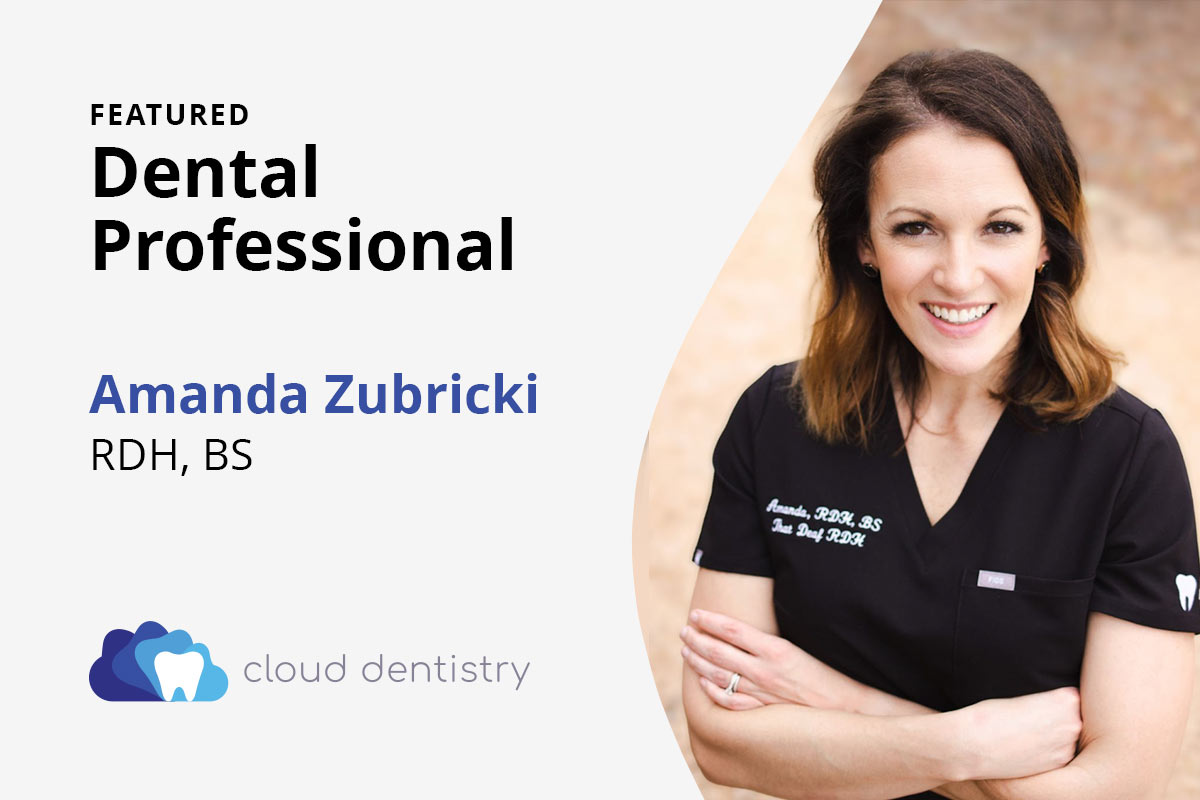Inclusion and Accessibility: Caring for our Patients with Hearing Loss
Dental hygienist and advocate Amanda Zubricki shares valuable insights on how dental offices can improve inclusion and accessibility for all patients.
Deaf or hard-of-hearing individuals may face communication barriers when receiving dental care. To address these barriers, dental providers can use communication tools such as written instructions, visual aids, or American Sign Language (ASL) interpreters.
Additionally, dental providers must be patient, speak clearly, and face the patient while talking to facilitate lipreading. Providing accessible and inclusive dental care is crucial for all individuals' overall health and well-being, regardless of their hearing abilities.
Inclusion and accessibility must become normalized in our society. It's essential that everyone feels valued and included in the community, regardless of abilities, background, or identity. We can work towards this by creating more accessible environments and advocating for inclusive policies and practices. Ensuring that all patients receive the care they need is crucial in healthcare.
According to the Americans with Disabilities Act, the ADA requires that Title II entities (state and local governments) and Title III entities (businesses and nonprofit organizations that serve the public) communicate effectively with people with communication disabilities. The goal is to ensure that communication with people with these disabilities is equally effective as communication with people without disabilities.
To help achieve effective communication with people with hearing loss, there are some steps that businesses and organizations can take. Here are a few suggestions:
- Use plain language: Avoid using technical jargon or complex terminology. Use plain and straightforward language that is easy to understand.
- Provide alternative formats: Some individuals with hearing loss may have difficulty processing written or spoken language. Providing alternative arrangements like sign language interpretation or simple gestures can be helpful.
- Use assistive technology: There are various assistive technologies available that can help, such as text-to-speech software or speech recognition software.
- Train staff: It's essential to train staff on communicating effectively with individuals. It can include speaking clearly, listening actively, and allowing extra time for responses.
- Have a clear mask ready: This is very useful to have in the office for patients who prefer visual cues.
By implementing these strategies, businesses, and organizations can ensure that communication with individuals with hearing loss is effective and inclusive.
Full communication accessibility is crucial for reducing health inequities and ensuring the deaf community receives proper healthcare, as they often experience discrimination daily.
One of the biggest challenges the deaf community faces when seeking healthcare services is the lack of sign-language interpreters. This can lead to miscommunication and misunderstandings, resulting in inadequate treatment or misdiagnosis. Some healthcare facilities have implemented video remote interpreting (VRI) technology to address this issue, allowing virtual interpretation services. Assistive technology can provide immediate access to interpreters and ensure that deaf patients receive the same level of care as their hearing counterparts.
Additionally, dental professionals can also improve communication with their deaf patients by learning basic sign language and providing written materials in addition to clear verbal communication. By addressing communication barriers and promoting accessibility, we can work towards reducing health inequities for the deaf community.
Amanda Zubricki, RDH, BS, is a dental hygienist based in Raleigh, NC, and the founder of That Deaf RDH Foundation, a nonprofit organization dedicated to supporting deaf and hard-of-hearing individuals pursuing careers as dental hygienists. Amanda graduated from Towson University with a Bachelor of Science in Psychology and worked with children with disabilities as well as a massage therapist before pursuing a degree in dental hygiene at Northern Virginia Community College. She has been a board licensed dental hygienist since 2017 and is also an orofacial myofunctional therapist with a passion for helping patients with TMJ and sleep disorders. Amanda has held dental hygiene licenses in Virginia and Texas before settling down in North Carolina with her family.
Amanda was born profoundly deaf and wears hearing aids. Through her foundation, she seeks to provide financial and community support to deaf and hard-of-hearing individuals pursuing careers in dental hygiene. Apart from her clinical and nonprofit work, Amanda is also an advocate for inclusion in the general public and workforce. She creates and shares content on her Instagram page @that.deaf.girl and can be reached at amanda@thatdeafrdh.org.
Written By Amanda Zubricki, RDH, BS
